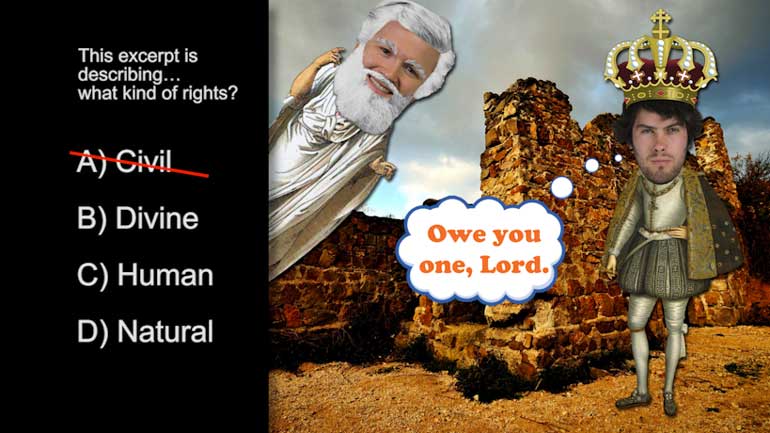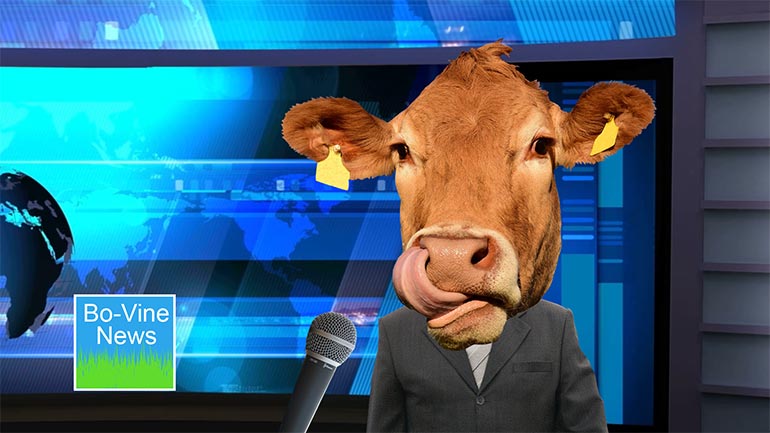ShmoopTube
Where Monty Python meets your 10th grade teacher.
Search Thousands of Shmoop Videos
Cost Accounting: What is CVP and Cost-Volume-Profit Analysis? 2 Views
Share It!
Description:
What is CVP and Cost-Volume-Profit Analysis? Cost-Volume-Profit analysis is used in accounting to find break-even points (when profit less cost is zero) depending on how much it costs to make a certain volume of product.
Transcript
- 00:00
And finance Allah shmoop What is CVP and or cost
- 00:06
volume Profit analysis All right For starters CVP is not
- 00:13
that thing that runs a computer That cpu Yeah And
- 00:16
it's not a drugstore that c v s And it's
- 00:19
not a fancy name for resumes That's uh just CV
Full Transcript
- 00:23
CVP cost volume profit analysis Well CVP is all about
- 00:28
profits rather than optimizing profits Yes subtle thing There you
- 00:32
are running a company You make foam padding for people
- 00:34
who experienced a psychotic breaks to put on their bedroom
- 00:38
walls You're trying to figure out what pricing delivers the
- 00:41
best operating or net income returns All right what time
- 00:44
is it Yes it's time for CVP analysis Yet you
- 00:48
knew going well this thing helps you find the answer
- 00:51
in a kind of matthew way to optimizing your problems
- 00:54
You know So you're not just throwing darts or shaking
- 00:56
a magic eight ball or something although we think that's
- 00:58
pretty cool OK well when you run a CVP you
- 01:01
make some assumptions You use a whole lot of scenarios
- 01:04
that don't necessarily reflect real life but they help the
- 01:07
math along For instance you assume all of your inventory
- 01:10
gets sold like you're not monkeying around with inventory ballooning
- 01:14
on your shelves and hiding profits Nor are you depleting
- 01:17
it suddenly to generate suddenly a lot of cash and
- 01:20
well taxes Maybe you're also assuming that pricing is flat
- 01:24
You're neither raising nor lowering pricing and your margins then
- 01:27
should pretty much stay about the same You know like
- 01:30
if you're keeping prices flat the price per square yard
- 01:32
stay steady for the head butter two thousand And that
- 01:35
thing which is your primary product right You're also assuming
- 01:39
that your cost of producing the foam is flat and
- 01:42
squishy Well the variable costs remain constant flat you know
- 01:45
like the padding And you're assuming that there are no
- 01:47
meaningful changes to your phone fixed costs like rent or
- 01:50
insurance or the machine that squeezes out the patting twenty
- 01:53
four by seven The on ly change here the on
- 01:56
ly input in the equation you're going to monkey with
- 01:59
is act activity I e volumes sold So the basic
- 02:02
question you're asking How does prophet change when we change
- 02:06
the amount of stuff we make What happens if we
- 02:10
make Maur What happens if we make less That's what
- 02:12
we're asking Well the star of the show and CVP
- 02:14
analysis is country abuse Shin margin So you're producing million
- 02:19
yards of patting CVP is all about figuring out what
- 02:21
happens when you produce that million and one thir million
- 02:25
and first yard of padding When you produce your first
- 02:28
yard will that yard costs a fortune right from a
- 02:31
mass standpoint you bought all that equipment hired all those
- 02:33
workers built a whole factory just to make one yard
- 02:36
of patting very expensive But as you make more well
- 02:38
the cost gets spread out over more product All the
- 02:41
fixed costs like rent insurance and so on get applied
- 02:44
to a larger number of units There Amor ties across
- 02:47
a bigger base right the per unit cost then drops
- 02:51
well Once you're running the factory and churning out patting
- 02:53
it becomes all about contribution margin like that's the rule
- 02:57
that runs your company Optimize it So if that last
- 03:00
pad sells for ten bucks a yard and it cost
- 03:02
you six bucks a yard to make well then your
- 03:04
contribution per yard is four bucks and your contribution margin
- 03:09
is forty percent Yeah that works for over ten It's
- 03:12
basically revenue or rather sales than subtracting all the variable
- 03:16
costs in making that yard That's on a per unit
- 03:18
basis If the whole company's sold twenty million dollarsworth of
- 03:21
lunatic padding in a given year and it had total
- 03:24
variable cost If I'LL say fourteen million well then companywide
- 03:27
contribution margin delivery would be about six million bucks right
- 03:31
Twenty minutes fourteen contribution think donation to profits from sales
- 03:35
or something like that So the next big thing think
- 03:37
about is the break even point At what volume or
- 03:41
level of sales does the head butter two thousand cover
- 03:44
It's fixed Recurring costs where profits are zero and the
- 03:47
company is joss squeaking by like How much should it
- 03:51
produce Well let's say your factory has six million dollars
- 03:53
in fixed costs That amount covers things like rent on
- 03:56
the factory in the cost of the machines and so
- 03:58
on When you make that first yard of patting it
- 04:00
cost six million dollars sell it for ten bucks and
- 04:02
you've lost five million nine hundred ninety nine thousand nine
- 04:05
hundred ninety dollars Good for you Okay so we need
- 04:08
to figure out just how many yards you have to
- 04:10
make until that bottom line reaches zero Well At what
- 04:13
point Teo sales cover costs wealth the math equation sales
- 04:16
At this point this break even point equals total variable
- 04:20
cost plus total fixed costs and fixed costs are the
- 04:24
same as the contribution totals So the Head Butter two
- 04:27
thousand has fourteen million dollars invariable costs The cost of
- 04:30
the raw materials and labor IT center all included in
- 04:32
there and there are six million dollars in fix recurring
- 04:35
cost So then it's sales of twenty million box It's
- 04:37
just breaking even That sales volume equates to two million
- 04:41
yards worth of padding Sold it ten bucks each with
- 04:44
two million yards you're covering for the cost of the
- 04:46
patting itself and the labor and the electricity and the
- 04:48
raw materials and the facility caused and sales and marketing
- 04:51
and all of it together is fourteen million dollars invariable
- 04:55
costs Well you're also covered for the six million bucks
- 04:58
worth of fixed recurring cost like rent insurance and loading
- 05:01
dock snacks and so on And note that some cost
- 05:04
like manufacturing or sales can be both fixed and variable
- 05:07
right You're storing tons of patting You need rent more
- 05:10
storage space so your rent goes up So when you
- 05:12
put together a mini income statement like this you label
- 05:15
it contribution margin income statement because it's not a gap
- 05:19
compliance set of numbers There's no set of laws that
- 05:22
makes you Adam up in a certain way right They're
- 05:24
just there to help managers you know manage okay back
- 05:27
to break even The fancy formula runs like this Break
- 05:30
even Sales is or equals total fixed costs over contribution
- 05:34
margin ratio Well in your case you have six million
- 05:37
dollars in fixed costs and a contribution margin of seven
- 05:40
twenty It's or thirty five percent So you divide the
- 05:43
six million by the point three five to get twenty
- 05:45
mill in sales as break even see it's like magic
- 05:47
Well given the cost structure to break even I'ii stop
- 05:49
losing money on the whole deal You need to reach
- 05:51
twenty million in sales After that you've taken care of
- 05:54
all the fixed costs the rent the equipment and so
- 05:57
on more than twenty million in sales and you start
- 05:59
to book profits Yeah which should keep your shareholders from
- 06:02
hitting their heads against the wall though if they did 00:06:05.295 --> [endTime] Well at least you'd have some new customers
Up Next
GED Social Studies 1.1 Civics and Government
Related Videos
What is bankruptcy? Deadbeats who can't pay their bills declare bankruptcy. Either they borrowed too much money, or the business fell apart. They t...
What's a dividend? At will, the board of directors can pay a dividend on common stock. Usually, that payout is some percentage less than 100 of ear...
How are risk and reward related? Take more risk, expect more reward. A lottery ticket might be worth a billion dollars, but if the odds are one in...




